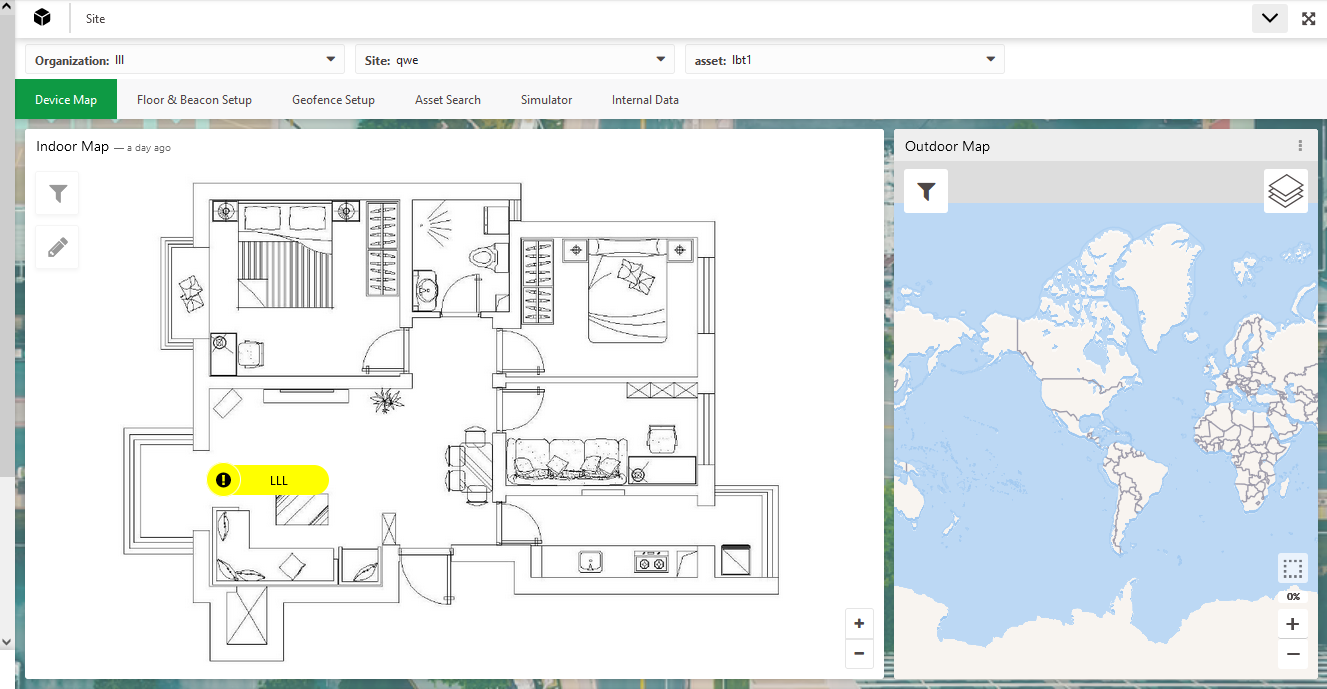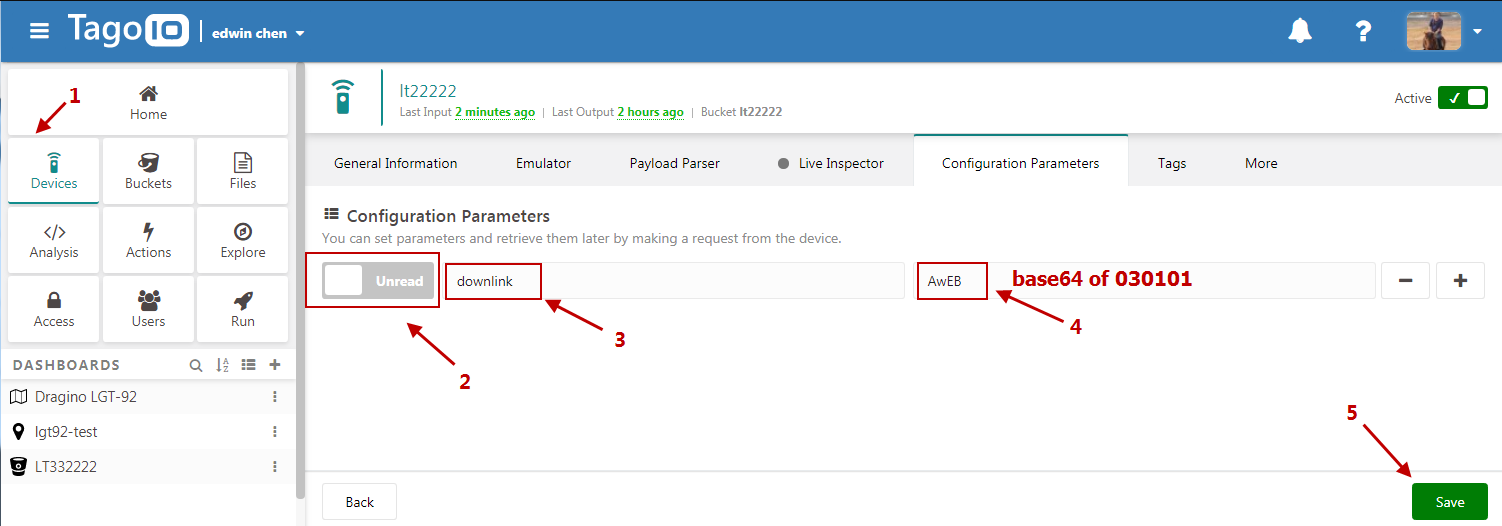
Downlink
Contents:
- 1. Parse Payload
- 2. Create device steps at Tago
- 3. Create LGT92 positioning widget
- 4. Real Time Location System demo(RTLS)
1. Parse Payload
The following is our operation process and interface.
The code can be run in the payload parser.
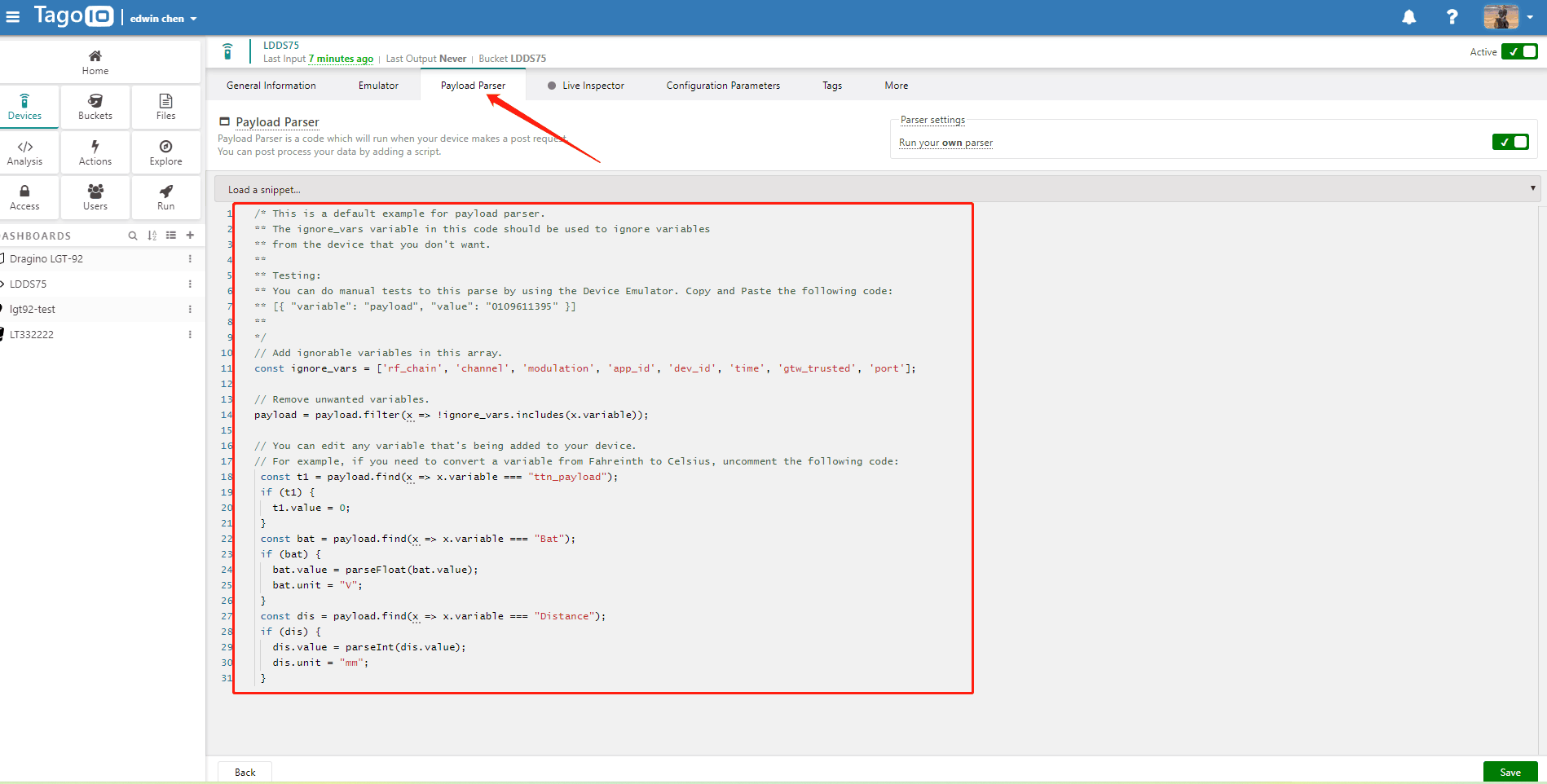
Parse Payload
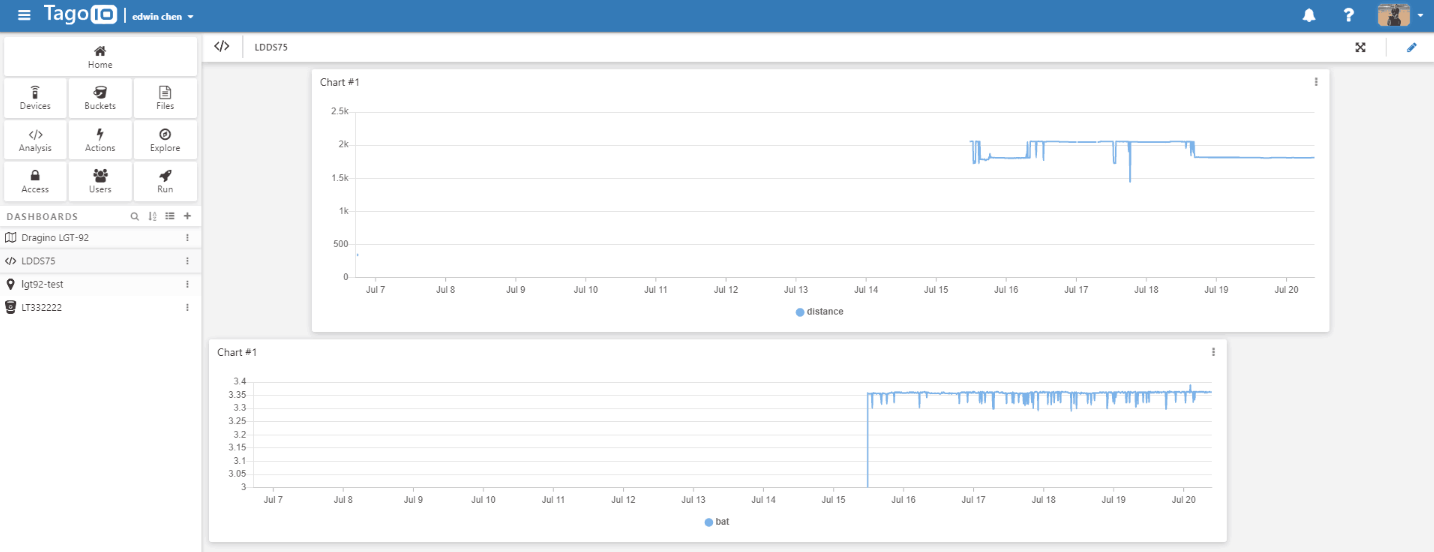
Parse Payload
2. Create device steps at Tago
Take the creation of LGT92 as an example
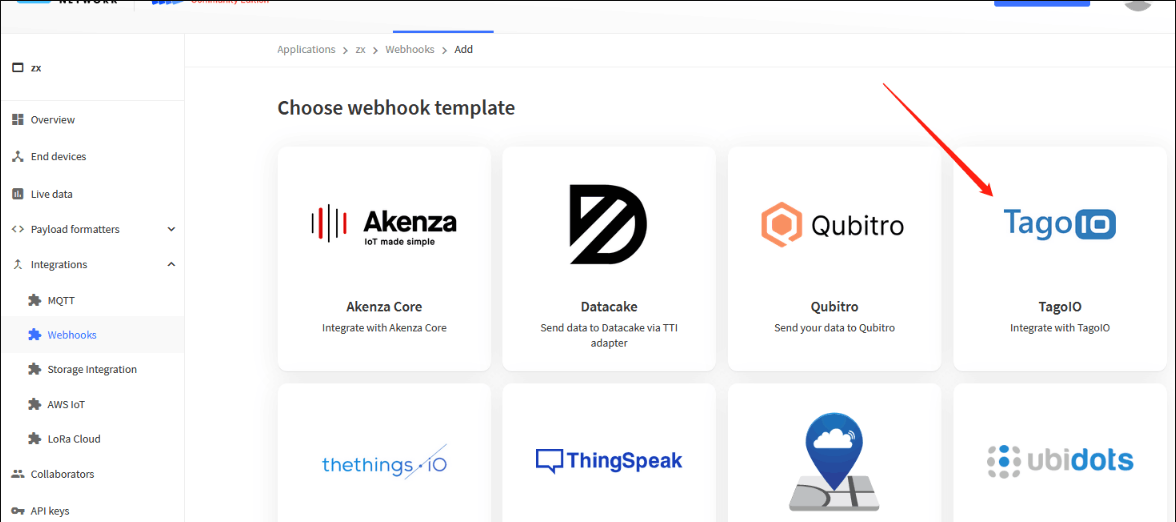
Get the authorization code and fill in it
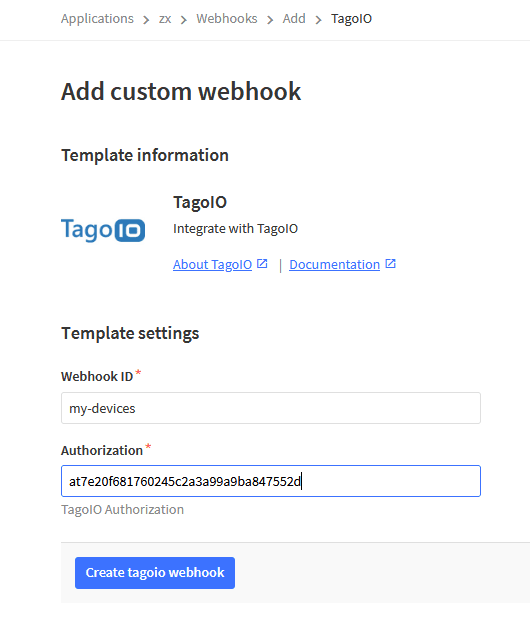
All the following options require authorization.
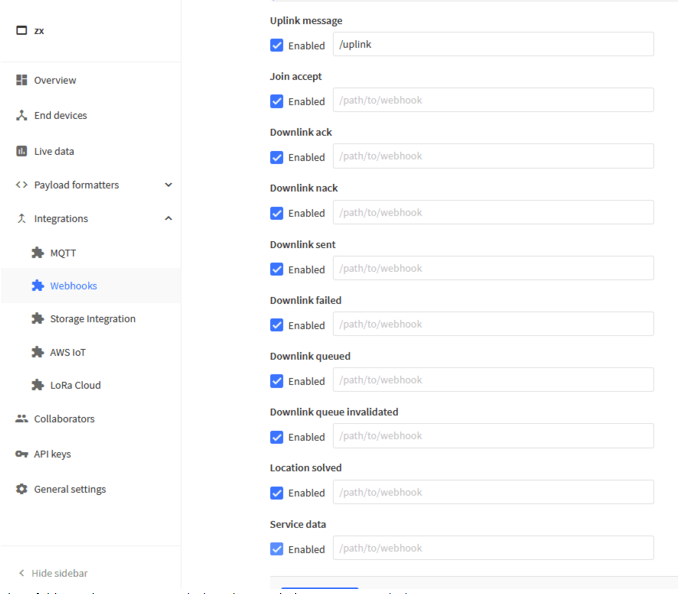
create device.
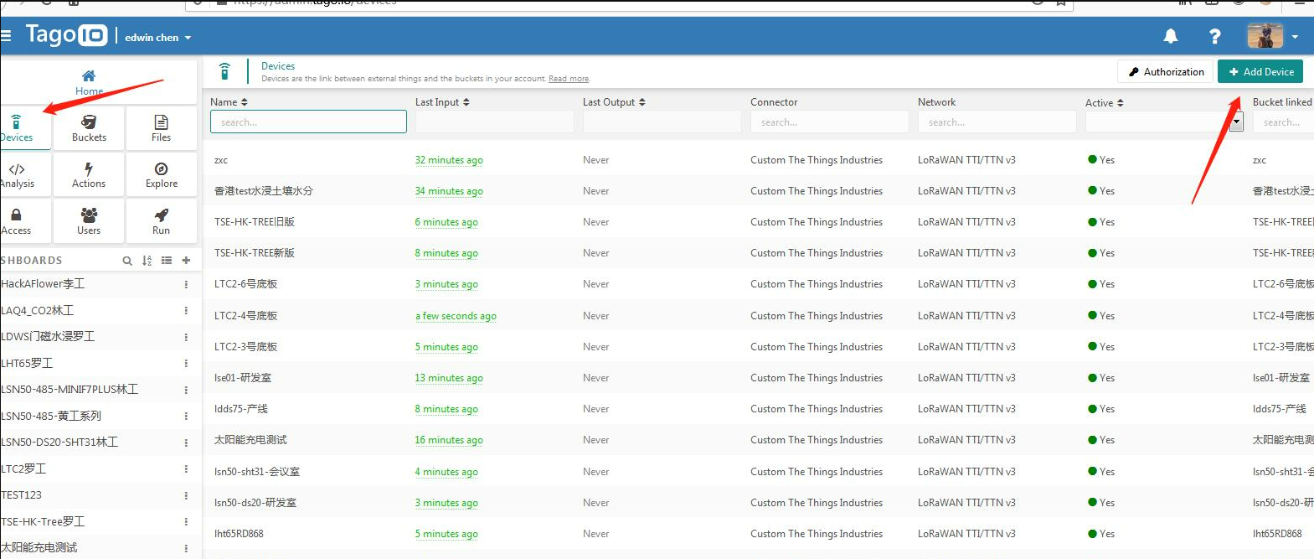
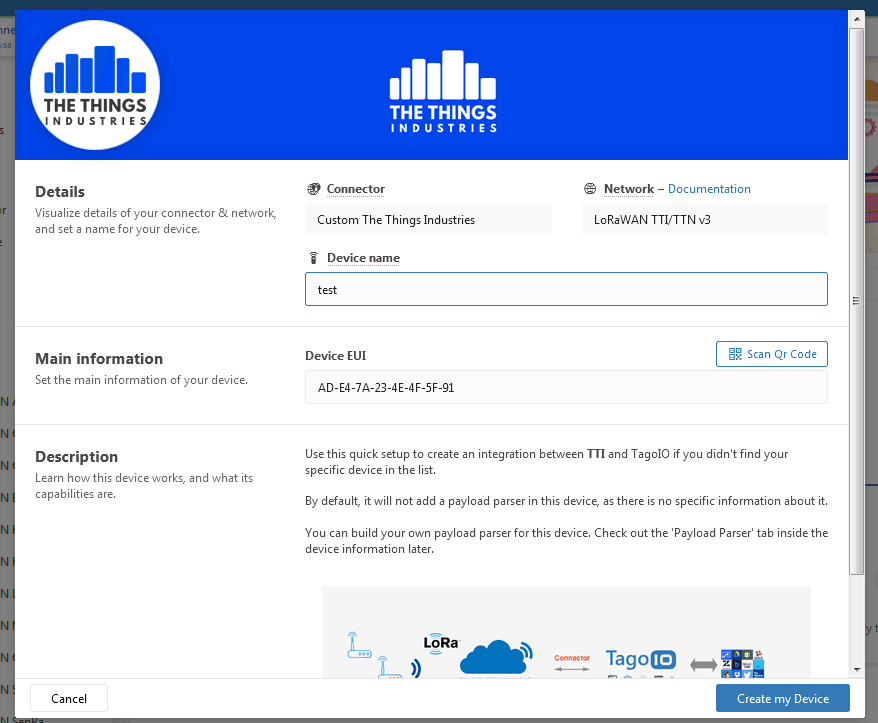

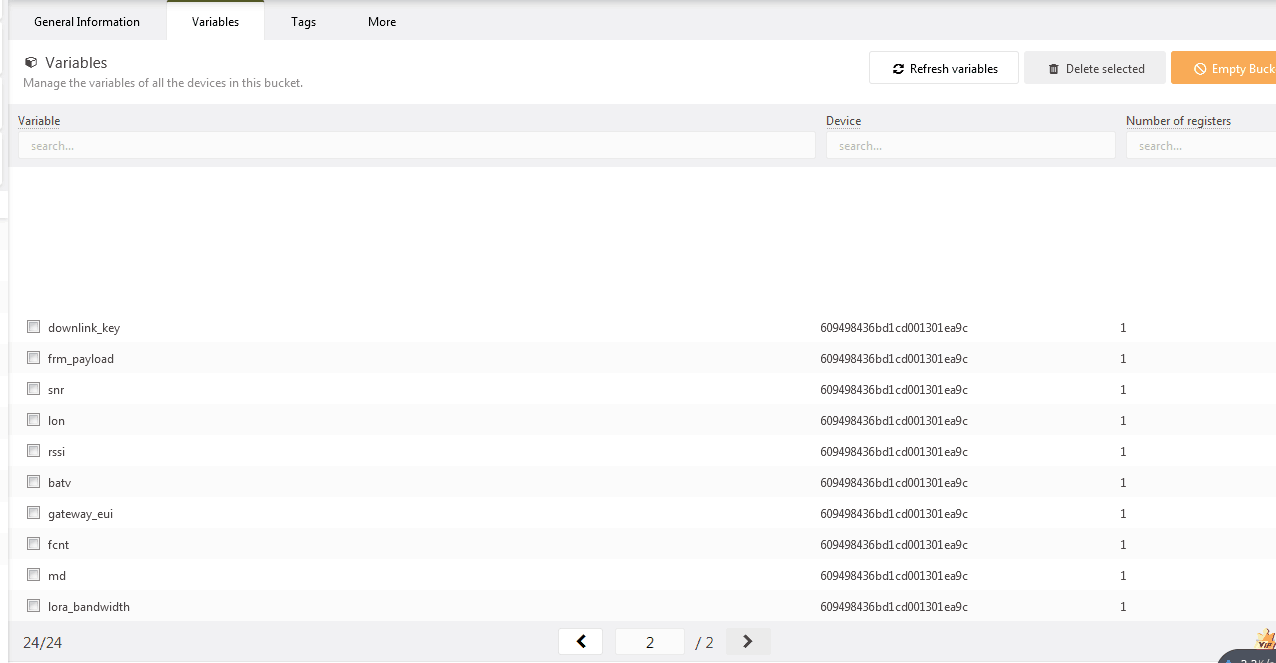
The corresponding widget can be created according to the decoding of the device on TTN.
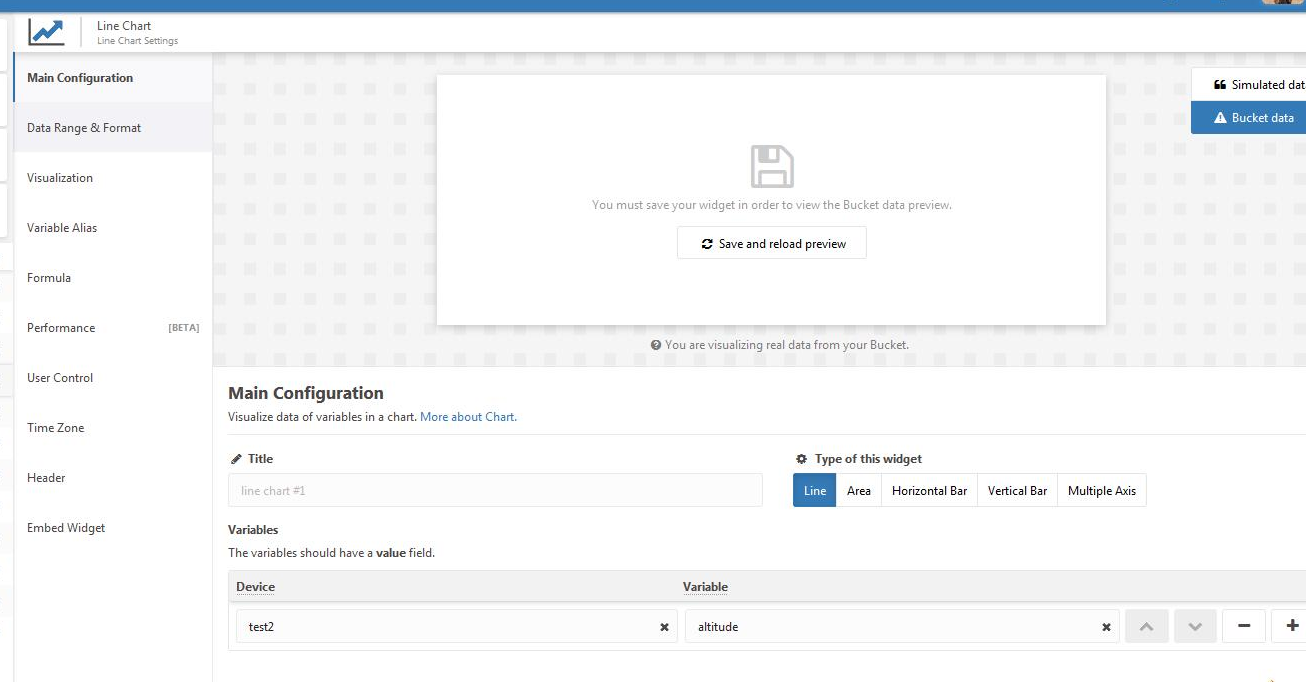

3. Create LGT92 positioning widget
Creating lgt92 in TTN does not require manual creation, you directly select LGT92 in the brand.
Devices registered from the LoRaWAN device repository do not need to add a decoder. To manually create a device, you need to add a decoder.
Note: LAQ4 is not registered in the LoRaWAN device repository, the device needs to be created manually.
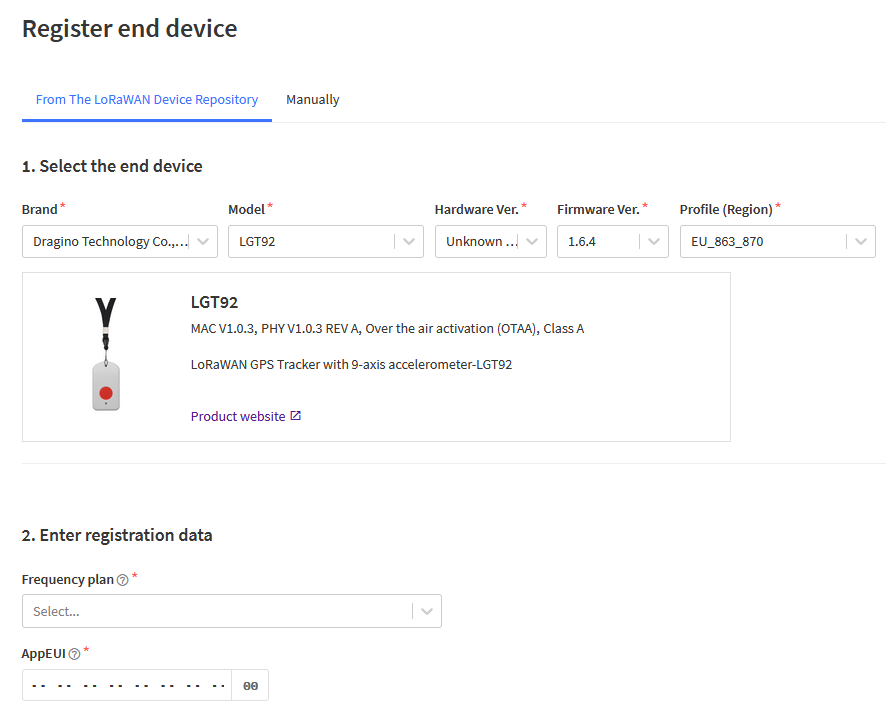
The same steps are used to create widgets and location maps.
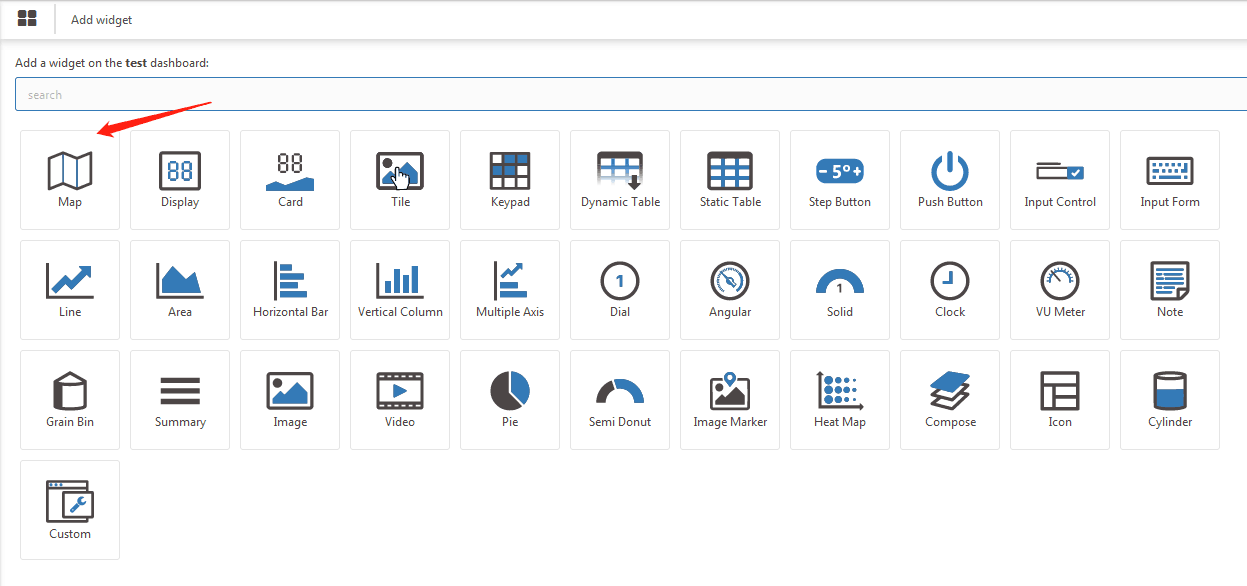
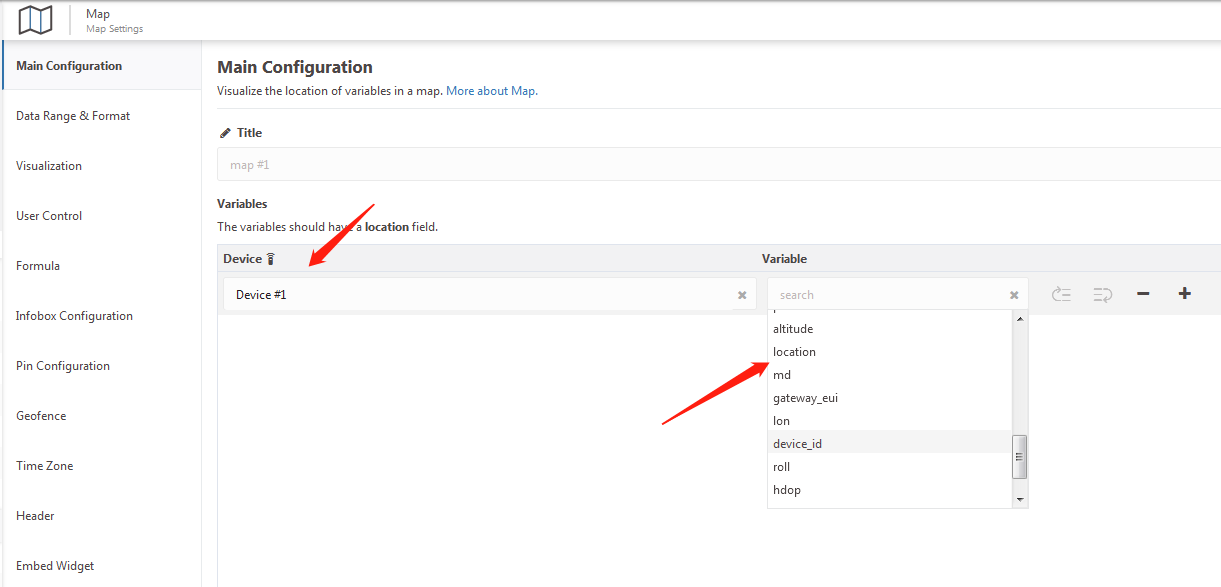
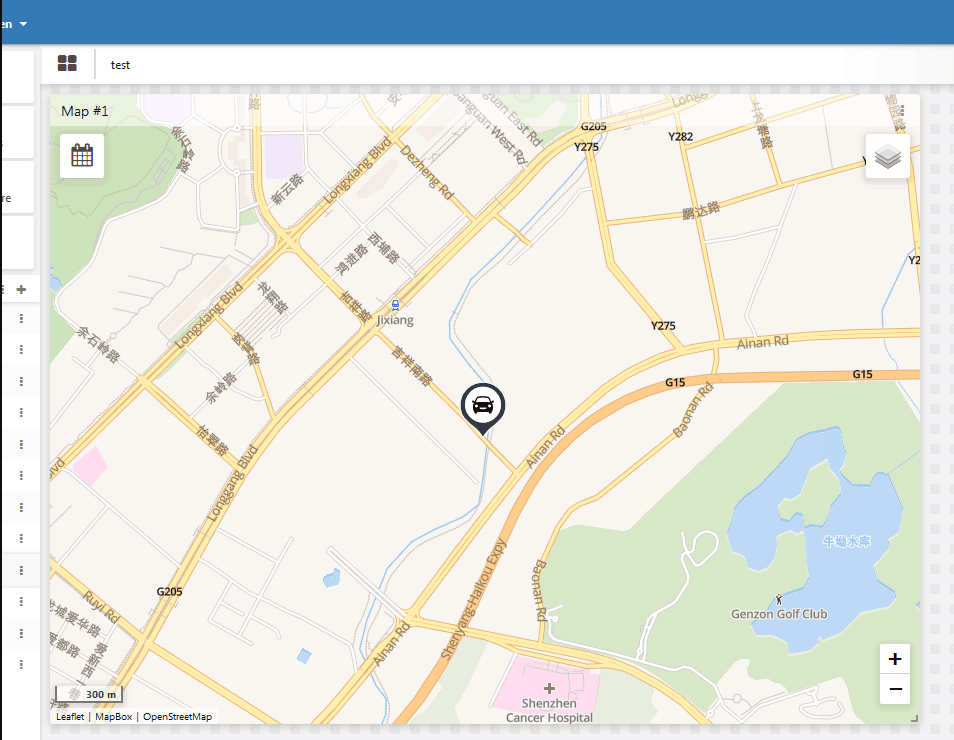
LGT92 displays the walking track according to the location of the sent data packet.
The device sets the time interval for sending data packets to control the positioning track.
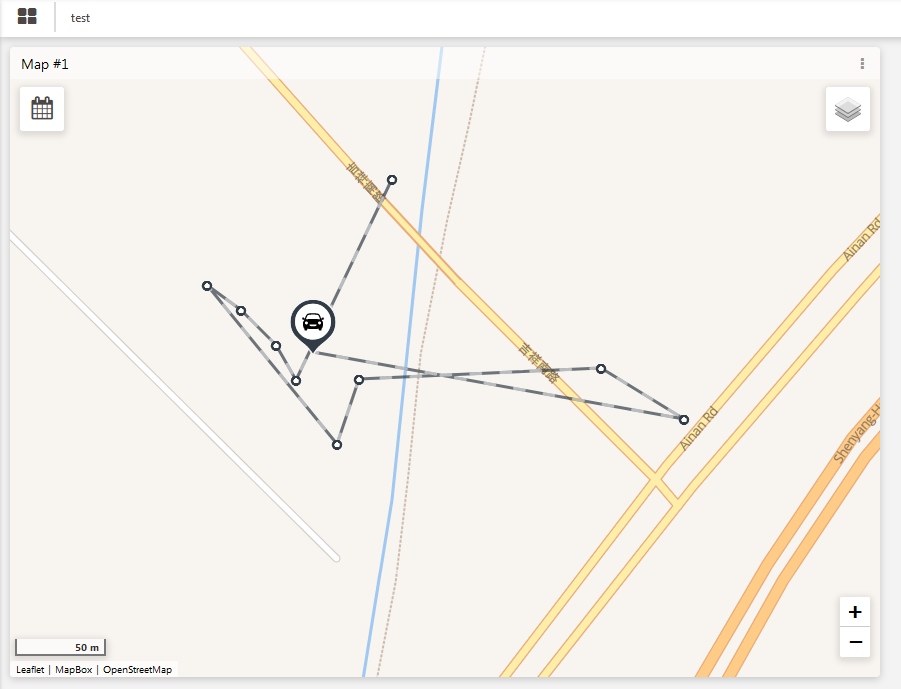
4. Real Time Location System demo(RTLS)
4.1 Introduction
The purpose of this document is to describe the Real Time Location System demo(RTLS). It is created as a manual guide for understanding each process of the application, explaining types of users and setting the application.
You can access the application through:
The user can read this document for the description of the real-time positioning system demonstration.
4.2 Instructions for using LBT1 with RTLS
(1)RTLS supports TTNv3 and helium servers for indoor positioning.
(2)The user needs to register the device with LBT1 on the TTNv3 or helium server.
(3)Then the user needs to integrate the application into Tago.
(4)Create LBT1 devices and beacons in RTLS. Please refer to the RTLS instruction document for the specific process.
(5)The coordinate position will be updated every time the device sends a data packet.
